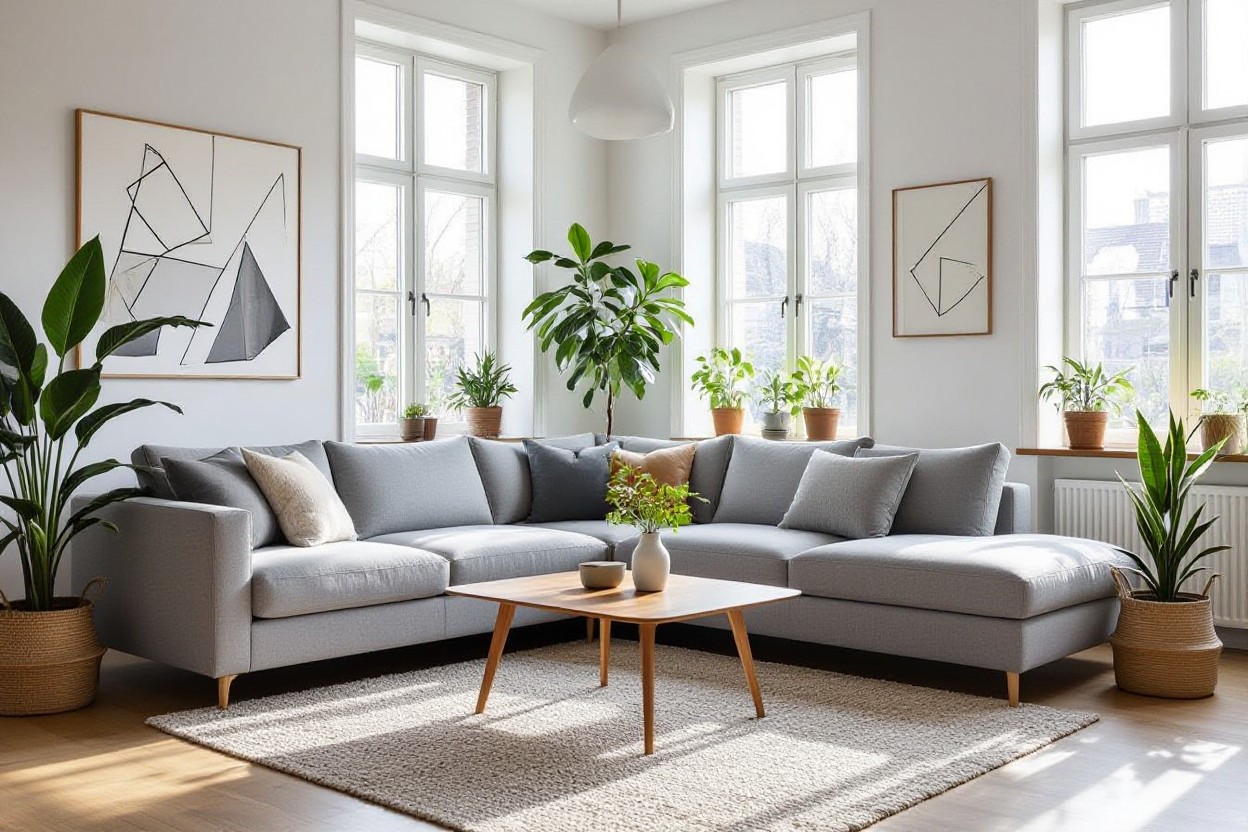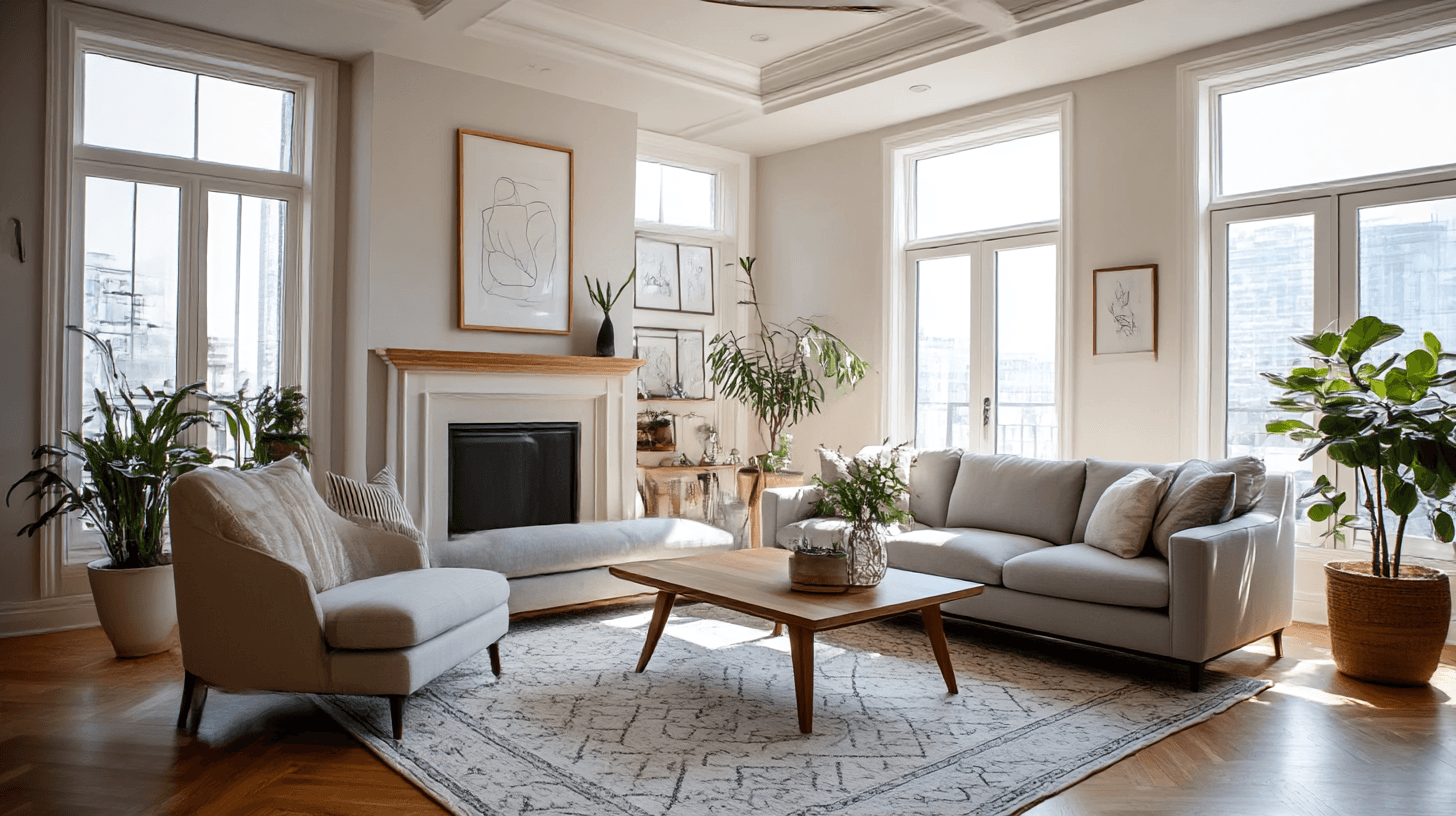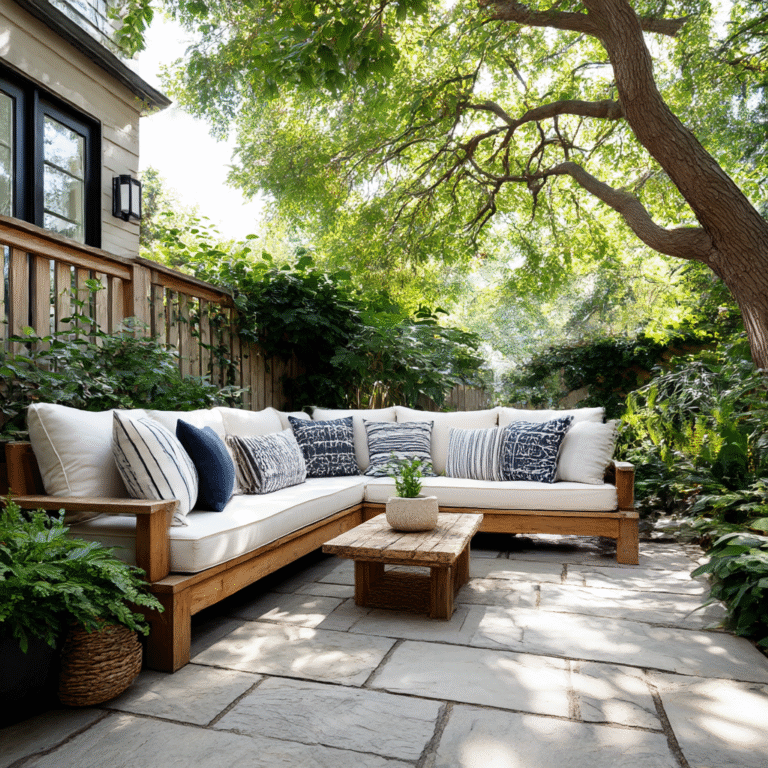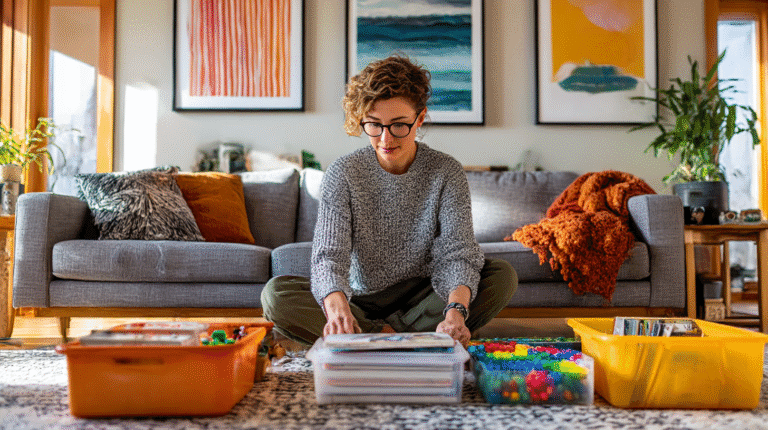There’s a transformative Scandinavian design philosophy that’s about to revolutionize your living space in ways you never imagined. While you’ve probably heard of hygge’s cozy warmth and lagom’s balanced approach, there’s another powerful concept that combines functionality with soul-soothing simplicity. This isn’t just about minimalism or adding candles—it’s a complete mindset shift that will help you create a living room where you actually want to spend time. Once you understand this principle, you’ll never look at your furniture arrangement, color choices, or decorative pieces the same way again.
What is Hygge?
Hygge (pronounced “hoo-gah”) represents the Danish philosophy of creating warmth, contentment, and well-being through simple pleasures. You’ll find it in candlelit dinners, soft blankets draped over chairs, and the gentle ritual of afternoon tea with friends. This concept goes beyond mere decoration—it’s about crafting moments that make your soul feel at home. Danes credit hygge as one reason their country consistently ranks among the world’s happiest, despite long, dark winters.
The Danish Art of Coziness
At its core, hygge invites you to slow down and savor life’s smallest comforts. Think of it as intentional coziness—lighting candles instead of harsh overhead lights, choosing natural textures over synthetic materials, and creating intimate spaces where conversations flow easily. Your living room becomes a sanctuary when you embrace this mindset, transforming from just another room into a place where stress melts away the moment you step inside.
How Hygge Transforms Spaces
When you apply hygge principles to your living room, you’re not just rearranging furniture—you’re reshaping how the space makes you feel. Soft lighting replaces bright bulbs, plush textiles invite touch, and every element serves a purpose beyond aesthetics. Your room shifts from a showpiece to a haven.
Studies show that environments designed with hygge principles can actually lower cortisol levels and reduce stress. You’ll notice this transformation immediately: corners that once felt empty now beckon with reading nooks, cold spaces warm up with layered rugs and throws, and your living room naturally becomes the heart of your family. The magic happens through layering—combining ambient lighting with multiple seating options, mixing textures like wool, linen, and wood, and keeping surfaces uncluttered yet lived-in. Your space tells a story of comfort rather than perfection.
Embracing Lagom
Lagom, the Swedish philosophy of “just the right amount,” transforms your living room into a space where nothing feels excessive or lacking. You’ll find this approach liberates you from the pressure of following trends while creating a room that genuinely reflects your needs. Swedish designers have practiced lagom for generations, proving that balanced spaces reduce stress and increase daily satisfaction. Your living room becomes a testament to intentional choices rather than impulse purchases.
Finding Balance in Design
Balance in lagom means evaluating every piece in your living room with fresh eyes. You don’t need three decorative vases when one beautiful piece makes the statement. Consider how Swedish homes typically feature 5-7 key furniture pieces in their main living areas, each serving a clear purpose. Your coffee table should be functional yet attractive, your sofa comfortable without dominating the room, and your lighting adequate without being harsh.
Minimalism Meets Comfort
Lagom rejects the cold austerity often associated with minimalism by prioritizing livability alongside simplicity. You’re not stripping your space bare; you’re curating it thoughtfully. Swedish living rooms average 15-20 meaningful objects compared to the typical Western home’s 50+ decorative items.
Your throw pillows should invite you to sink in, not just photograph well. Natural textures like wool blankets, linen curtains, and wooden side tables add warmth without clutter. Studies show that rooms with 3-4 complementary textures feel more inviting than single-material spaces. You can display your favorite books on open shelving while keeping surfaces clear for actual living. The key is choosing quality pieces that serve both practical and aesthetic purposes, creating a room where you actually want to spend your evenings rather than just admire from the doorway.

Key Elements for a Cozy Living Room
Creating that perfect hygge atmosphere in your living room starts with understanding the building blocks that make Scandinavian spaces feel so inviting. You’ll want to focus on layering natural materials, managing your light sources thoughtfully, and selecting pieces that serve both function and comfort. The beauty of this approach lies in its simplicity—you’re not adding more stuff, you’re choosing better elements that work together harmoniously. Think of it as curating rather than decorating, where each item earns its place by contributing to that warm, lived-in feeling you’re after.
Textures and Fabrics
Soft wool throws, chunky knit blankets, and linen cushions are your best friends when building hygge into your space. You’ll notice Scandinavian homes layer at least three different fabric textures in one seating area—perhaps a leather sofa topped with sheepskin, velvet pillows, and a cable-knit throw. Natural fibers like cotton, wool, and linen not only feel better against your skin but also regulate temperature beautifully. Don’t shy away from mixing rough with smooth; that contrast creates visual interest while keeping everything touchable and inviting.
Lighting and Ambiance
Your lighting choices can make or break the hygge vibe you’re working toward. Scandinavians famously avoid harsh overhead lights, instead placing multiple small light sources throughout the room—typically 4-6 per living space. Candles remain the gold standard, with Danish households burning approximately 13 pounds of candle wax per person annually, more than any other country worldwide.
Layering your light sources at different heights transforms your living room’s mood completely. You’ll want table lamps on side tables, floor lamps in corners, and yes, plenty of candles on your coffee table. Dimmer switches give you control over intensity, letting you adjust from bright morning energy to evening coziness. Warm-toned bulbs (aim for 2700K) mimic candlelight and create that golden glow Scandinavian interiors are famous for. String lights aren’t just for holidays—draped subtly along shelves or windows, they add that magical twinkle that makes you want to curl up and stay awhile.
Color Palettes That Invite Warmth
Your color choices set the foundation for that coveted Scandinavian warmth you’re after. Think beyond stark white walls—true Nordic design embraces layered tones that shift with natural light throughout the day. You’ll want to build a palette that feels lived-in and welcoming, where every shade works together to create a cocoon-like atmosphere that embodies both hygge’s coziness and lagom’s perfect balance.
Soft Neutrals
Warm beiges, creamy off-whites, and gentle greiges form your base layer. These aren’t the cold, sterile neutrals you might expect—instead, look for shades with undertones of mushroom, oatmeal, or warm taupe. Your walls, larger furniture pieces, and foundational textiles should anchor the room in these soothing hues. Scandinavian designers often use Farrow & Ball’s “Elephant’s Breath” or Benjamin Moore’s “Edgecomb Gray” to achieve this effortlessly warm neutrality.
Accent Colors
Muted terracotta, dusty sage, and soft charcoal bring personality without overwhelming your space. You’ll find these accent shades in throw pillows, artwork, and smaller decorative pieces—typically making up about 20% of your room’s visual weight. Swedish interiors particularly favor burnt orange and deep forest green during autumn months.
Strategic placement of these accent colors creates visual interest while maintaining harmony. Try pairing a terracotta throw blanket with sage green cushions on your neutral sofa, or introduce a charcoal ceramic vase against your beige walls. The key is repetition—use each accent color at least twice across different elements to create cohesion. You’re aiming for subtle pops that draw the eye naturally around the room, never demanding attention but gently guiding your gaze through the space.
Tips for Personalizing Your Space
Your living room should tell your story, not replicate a showroom floor. The beauty of Scandinavian design lies in its flexibility—it welcomes your cherished items while maintaining that signature calm aesthetic. Start by selecting pieces that spark genuine joy: a vintage lamp from your grandmother, travel souvenirs displayed thoughtfully, or artwork that makes you smile each morning. Layer textures through handwoven throws, ceramic vases in earthy tones, or a well-loved reading chair positioned by the window. Recognizing what truly matters to you transforms minimalism from cold to inviting.
- Display meaningful objects in curated clusters rather than spreading them everywhere
- Choose quality over quantity—one statement piece beats five forgettable items
- Mix old and new elements to create depth and character
- Leave breathing room around your favorite pieces so they can shine
Incorporating Personal Touches
You’ll find that Scandinavian spaces thrive when personal elements blend seamlessly with clean lines. Consider creating a gallery wall with family photos in matching light wood frames, or showcase your book collection on floating shelves painted in soft whites. Your hobbies deserve visibility too—whether it’s a guitar on a minimalist stand or pottery pieces you’ve collected over the years. The key is intentional placement that honors both your personality and the room’s breathing space.
Nurturing Nature Indoors
Bringing the outdoors inside sits at the heart of Nordic living philosophy. You can start small with low-maintenance plants like snake plants or pothos, which thrive in various light conditions and purify your air naturally. Studies show that indoor plants reduce stress levels by up to 37% while boosting productivity and creativity. Place greenery at different heights—tall fiddle leaf figs in corners, trailing plants on shelves, and small succulents on coffee tables.
Natural elements extend beyond living plants to include wooden branches in ceramic vases, river stones arranged in shallow bowls, or dried flowers that maintain their beauty through seasons. You might incorporate natural textiles like linen curtains that filter sunlight beautifully, or add a sheepskin rug for warmth and texture. Fresh flowers from your local market, changed weekly, bring life and subtle fragrance without overwhelming your senses. Even something as simple as opening windows daily connects your space to the rhythms of nature outside, creating that crucial flow between indoor comfort and outdoor vitality.
Maintenance: Keeping the Cozy Vibes
Your Scandinavian living room isn’t a one-and-done project—it needs gentle care to maintain that effortless hygge feeling. Think of it like tending a garden rather than scrubbing a hospital floor. You’ll want to establish simple routines that preserve the calm, uncluttered atmosphere without turning maintenance into another stressful task. The beauty of this approach is that less stuff means less work, and the minimalist aesthetic actually makes upkeep easier. Check out these 75 Scandinavian Living Room Ideas You’ll Love for inspiration on maintaining that balanced lagom lifestyle throughout the year.
Regular Decluttering
Set aside fifteen minutes each week to reassess what’s actually earning its place in your space. Scandinavian design thrives on intentionality, so if that decorative bowl hasn’t served a purpose in three months, it’s time to let it go. You’ll find that surfaces naturally accumulate mail, magazines, and random objects—tackle these flat spaces first. Create a donation box in your closet and add items as you spot them, rather than waiting for a massive quarterly purge that never happens.
Seasonal Refreshes
Swap out textiles and accessories four times a year to align with nature’s rhythm. In winter, layer chunky knit blankets and sheepskin throws; come spring, switch to lighter linen cushions in soft pastels. Summer calls for removing heavy layers entirely, while autumn welcomes warm terracotta tones and woolen accents back into the fold.
These seasonal shifts don’t require buying everything new—you’re simply rotating what you already own. Store off-season items in labeled boxes under your bed or in a hall closet. This practice keeps your living room feeling fresh without constant purchasing, which aligns perfectly with the lagom principle of “just enough.” You’ll notice how these small changes dramatically affect your mood and energy levels, making your space feel responsive to the world outside your windows rather than static and stale.
Final Words
Now that you’ve discovered the transformative power of hygge and lagom, your living room can become the cozy, balanced sanctuary you’ve always wanted. By embracing these Scandinavian concepts, you’ll create a space that nurtures both comfort and simplicity in your daily life. Start small—add soft lighting, declutter mindfully, and incorporate natural textures that speak to you. Your living room will evolve into more than just a place to sit; it’ll become your personal retreat where you can truly unwind and connect with what matters most. Welcome to your new Nordic-inspired haven!
FAQ
Q: What is the Scandinavian concept that transforms living room design?
A: The Scandinavian concept is called “hygge” (pronounced hoo-ga), a Danish philosophy centered on creating cozy, warm, and inviting spaces that promote comfort and contentment. This approach emphasizes soft lighting through candles and lamps, natural materials like wood and wool, neutral color palettes, and comfortable furniture arrangements that encourage relaxation and social connection. By incorporating hygge principles, your living room becomes a sanctuary that prioritizes well-being over aesthetics.
Q: How can I practically apply this Scandinavian concept to my existing living room?
A: Start by layering soft textures through throw blankets, cushions, and area rugs in natural fabrics. Replace harsh overhead lighting with multiple soft light sources like table lamps, floor lamps, and candles placed at different heights. Declutter your space and keep only meaningful items that bring joy. Add natural elements such as wooden furniture pieces, plants, and stone accessories. Create intimate seating areas that encourage conversation and togetherness. Choose a calming color scheme with whites, grays, beiges, and muted earth tones as your foundation.
Q: What makes this Scandinavian approach different from other interior design styles?
A: Unlike design trends focused primarily on visual appeal or following specific rules, the Scandinavian hygge concept prioritizes how a space makes you feel. It values function and comfort over formality, encourages simplicity over excess, and emphasizes creating atmosphere through lighting and texture rather than bold statements. This philosophy recognizes that your living room should support daily life and emotional well-being, making it a deeply personal and sustainable approach to design that adapts to your needs rather than demanding perfection.




